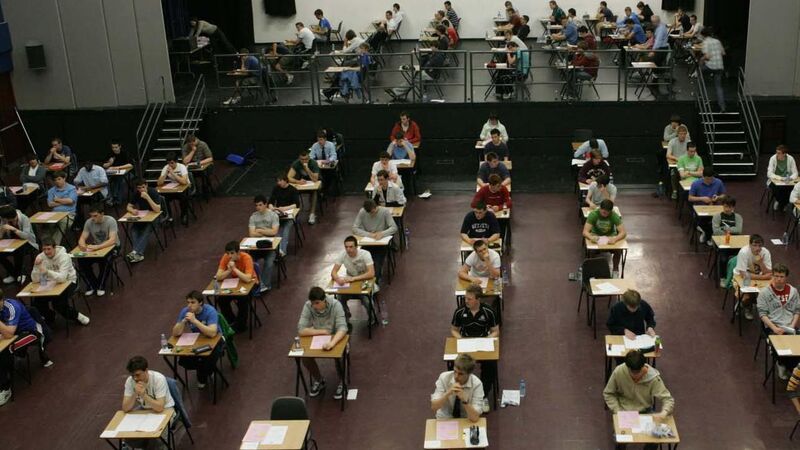Analysis: Top grades increase across the board in new normal for Leaving Cert

Across Irish, English, and maths, 12,539 more students received a grade between H1 and H4 this year than in 2019. Picture: Leon Farrell/RollingNews.ie
Much like so many other aspects of life this year, today marks a very different Leaving Cert results day for thousands of young adults around the country. A far cry from previous years, when students were allowed to celebrate in crowds at their schools, many will have, this morning, learned of their results sitting at their kitchen tables.
Their Leaving Cert grades will be the strongest on record in this country, following the extraordinary measures taken back in May.
The Department of Education has today published a tranche of documents relating to its decisions around developing calculated grades. As the week unfolds, more about the process will become clear. Initial evaluations show that more students this year opted for Higher Level subjects than ever before.
An increasing trend in recent years, it was accelerated in 2020 as most students tend to switch to a lower level closer to the exam. This resulted in significantly fewer students taking Foundation Level Irish and maths — from 2.1% in 2019 to 1% in 2020.
Good-quality data was submitted by schools, and it was clear to the department that teachers submitted their end of the data diligently. Much commentary focused on the algorithm the department would use as part of its standardisation process. However, it says it employed more of a statistical procedure, rather than a purely statistical algorithm.
The 13-step process revolved around using variables that described the prior educational attainment and school experiences of the 2020 students to develop a model that produced a 'best estimate' for each student. These results were indicative, rather than prescriptive, and while "insufficient" by themselves to estimate Leaving Cert scores, the department says they could be used to constrain bias.
Two sets of Junior Cycle data were also included in the model; data for the 2020 students, and the data linked to the Leaving Cert class of 2019, 2018, and 2017. As a result of the standardisation procedure, the department says scores were primarily based on teachers' estimates, but that bias was corrected credibly based on students' previous attainment.
Across Irish, English, and maths, 12,539 more students received a grade between H1 and H4 this year than in 2019. Increases were also recorded in these core subjects at Ordinary Level.
More than 97% of students who took Higher Level maths received a grade between H1 to H6, resulting in 498,175 bonus CAO points. However, approximately 3,000 students failed maths, with the majority of these at Ordinary level.
English and Irish also saw significant increases in top grades, as did chemistry, art, physics, and music. Applied maths saw 29.6% of students who opted for the Higher Level option receive a H1, compared to 16.5% in 2019.
Approximately 1,000 grades were not issued to students studying non-curricular languages such as Polish, Lithuanian, and Romanian, as these students were not receiving tuition from a teacher.
Young women, who tend to do better in the exams on average in a typical year, also scored better than young men under calculated grades. The model behaved "similarly" in DEIS schools and non-DEIS schools. When differences occurred, they tended to favour DEIS schools by narrowing the gap rather than widening it.
With the increased grades comes the fear of the knock-on implications for points needed for college courses. Every year the college entry process brings with it a certain degree of heartbreak as some students are inevitably let down after missing out on a course. There are many factors that can influence points in any given year. In 2018, 20% of entry points for courses went up or down by 25 points.
Additional places on popular courses are expected to help ease the pressure on the points race, which in turn is expected to have a cascading effect on the system. However, it is still too early to say for definite if this will have the desired effect.
Other factors that could come into play include how many students opt to defer their place, the numbers of international undergrad students, or if Irish students will opt to travel abroad.





